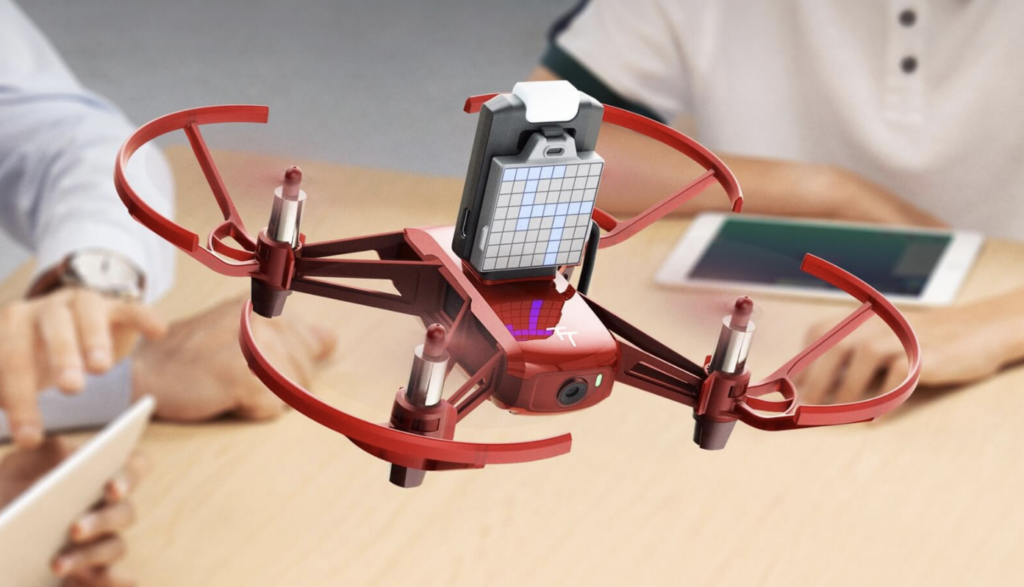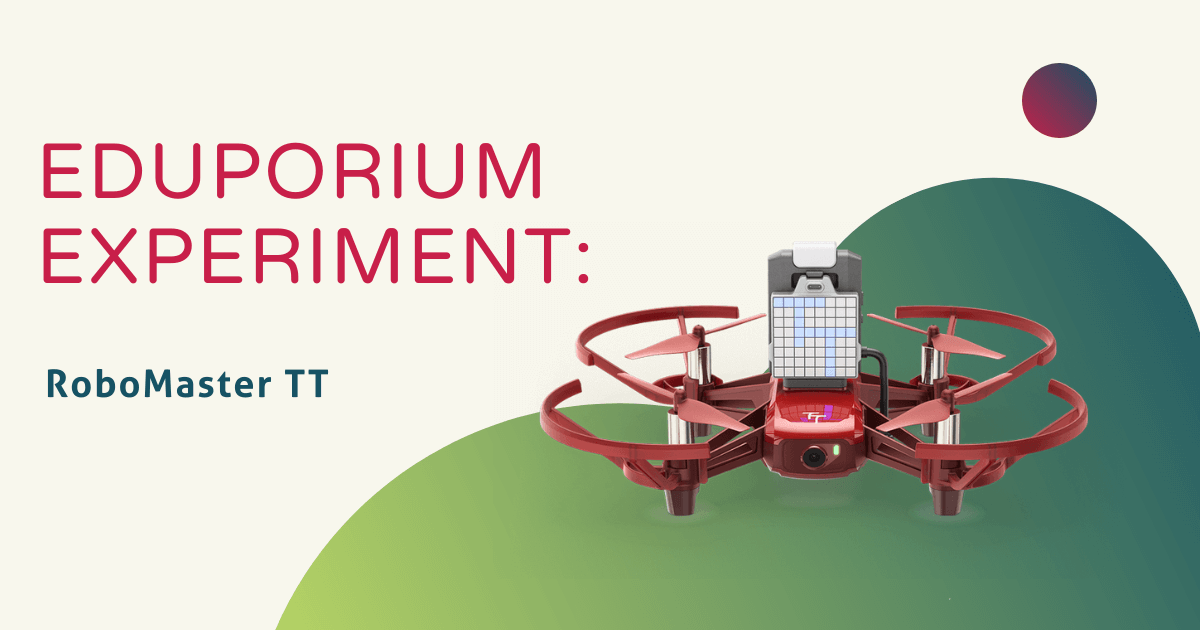As far as programmable drones go, the educational solutions from DJI are at the top of the list. For a long time, their Tello EDU drones have helped educators at any grade levels introduce students to central basics of drone piloting, create connections between drones and their real-world uses, and even teach key coding skills thanks to its unique connections to computer science. Now, ready to hover into STEM classrooms as the next big thing in educational drone kits, the DJI RoboMaster TT packs an even bigger punch. It's also programmable in a variety of coding languages and comes with new tech features that make it valuable all throughout middle, high school, and even into higher education. So, let's take a look at why.
To start, the RoboMaster TT is a bit more advanced than the original Tello EDU drone. Also, so there's no confusion, TT stands for Tello Talent—it's simply that next progression in the Tello drone series. One of the most notable RoboMaster TT features is its super smooth flight performance while it maintains its compact footprint. This includes the world-renowned DJI flight control algorithms and some cutting-edge safety and stability features. Plus, the RoboMaster TT includes a new ESP32 open-source module, which helps create a professional-grade drone platform for students. And, though it's more expensive, students can still get a whole lot of benefits with this latest version.
RoboMaster TT flight time and other features.
When it comes to using drones in STEM education, the top thing teachers may look at is flight time. This, of course, directly relates to the drone's battery, its power, and its efficiency. Beyond flight times, however, many educators—especially in CTE pathways courses—are also curious about linking various classroom lessons to real-world experiences. By that same token, plenty of fellow educators will want to ensure kids can learn key coding skills and still others might gravitate towards drones with the longest battery life. As one of the leaders in drone technology, however, the geniuses at DJI have considered all of these factors. And, while the RoboMaster TT flight time doesn't jump off the page, it's still pretty solid.
The flight time of the RoboMaster TT is right around eight minutes. This, as you might know, is quite a bit less than the Tello EDU's flight time of approximately 13 minutes. The RoboMaster TT, however, does use more power to support its additional features, so it burns battery more quickly. Also, students can fly the RoboMaster TT about 100 meters away at its top speed of eight meters per second. And, although they may want to, students shouldn't pilot their drone at a height of greater than 30 meters. Keeping all this in mind should help them create an efficient and hassle-free piloting experience.
Coding with the RoboMaster TT.
We mentioned it earlier but, with the new open-source module, students can do so much more coding with the RoboMaster TT. Not only can they explore graphical programming, the RoboMaster TT also supports coding in the Arduino and Micro Python environments. Within each environment, they can practice coding while learning other valuable skills specifically related to using aerial robots. For piloting and programming the drone, they can use the same Tello app as with the other DJI models. Within this in-depth environment, they can access all three coding options, tutorial videos, camera features, and more.

To install the Tello (or Tello EDU) app on your device, head to DJI's downloads center. There, students will find both the iOS and Android downloads for the Tello app and the Tello EDU app along with key safety tips and more. For the purpose of piloting the RoboMaster, we suggest the Tello app, which is preferred among the two. On DJI's downloads page, students and teachers can also find recommended classroom devices for both versions of either app. And, in using the RoboMaster TT with the Tello app, students could access real-time image transmission, camera and video functions, and firmware updates anytime.
Upgraded features and programming options.
One of the other important upgrades this drone includes is a programmable dot-matrix screen. Like with some other robotics and coding tools, students can program animations onto an 8x8 red and blue LED matrix that's built into the RoboMaster TT. Like when flying the RoboMaster, students can use graphical coding, Arduino, or Python code to control displays on the matrix. They can show anything from simple patterns to animations and more complex scrolling characters. Once they're ready to go, they could run these programmed animations on the RoboMaster's matrix and, perhaps more importantly, this feature was intentionally designed to help create greater human-to-drone interaction.
The LED matrix, combined with these powerful programming environments, helps students to create some extremely detailed flight paths. Besides the intriguing opportunities for coding, the RoboMaster TT also has a built-in ToF infrared ranging sensor that can measure up to 1.2 meters in front of it. With the sensor, it can perceive certain environmental features and avoid obstacles to help minimize the likelihood of it crashing. It can even detect some adverse weather conditions, like wind, and has a dual-band communication system, which helps it adapt to its environment. It can continue flying without interruption even in areas with spotty Wi-Fi. Plus, students can connect more drones to the same school network without compromising stability.
What comes in the kits.
Like with the Tello EDU, the RoboMaster TT kits come in various sizes. There's the single RoboMaster, the class pack of five, the class pack of 10, and the class pack of 20. Obviously, depending on your class size, there is certainly a drone kit that should work for you and your students. The materials that come in the box include the RoboMaster TT drone with some propellors, a set of propellor guards specific to the drone, two additional spare propellors, the matrix display and distance sensing module, the open-source controller, an extension board, mission pads, the flight battery, and a microUSB cable. Plus, with the DJI RoboMaster TT classroom packs, students and teachers get even more.
In the 20-pack, for example, you'll get the 20 drones, 20 batteries, 20 microUSB cables, 160 propellors, 80 propellor guards, 80 mission pads, and 20 propellor removal tools. Plus, each classroom pack even comes with additional drone accessories. With their Large Classroom Pack, you will get 40 additional batteries, 20 charging hubs, 160 added propellors, and 160 additional propellor guards—a pretty nice deal if you're ever integrating drones and coding in the curriculum. To learn more about the RoboMaster TT, click below or visit the DJI section of our store. As always, if you have any questions or would like to create a quote, you can contact us anytime. Follow us on Twitter and Instagram for more.



